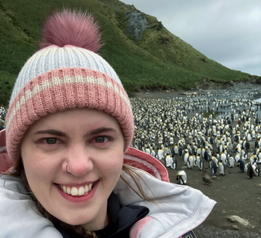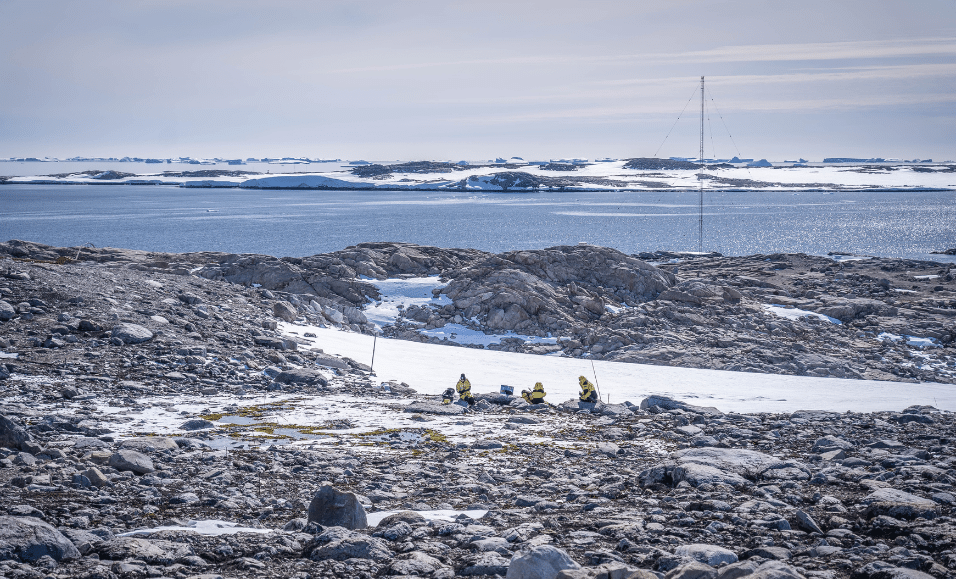Monitoring moss in a sea of ice

Dr Juan Sandino conducting a GNSS survey. Credit: Barbara Bollard

The moss and drone team conducting a hyperspectral survey at Robinsons Ridge. Source: Johan Barthelemy
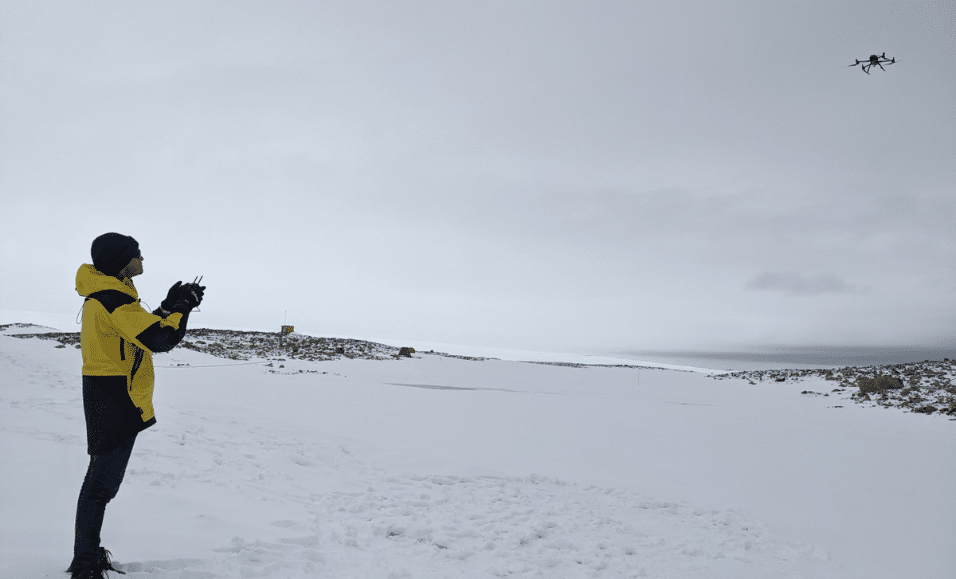
Dr Juan Sandino piloting a drone in Antarctica over summer. Source: QUT
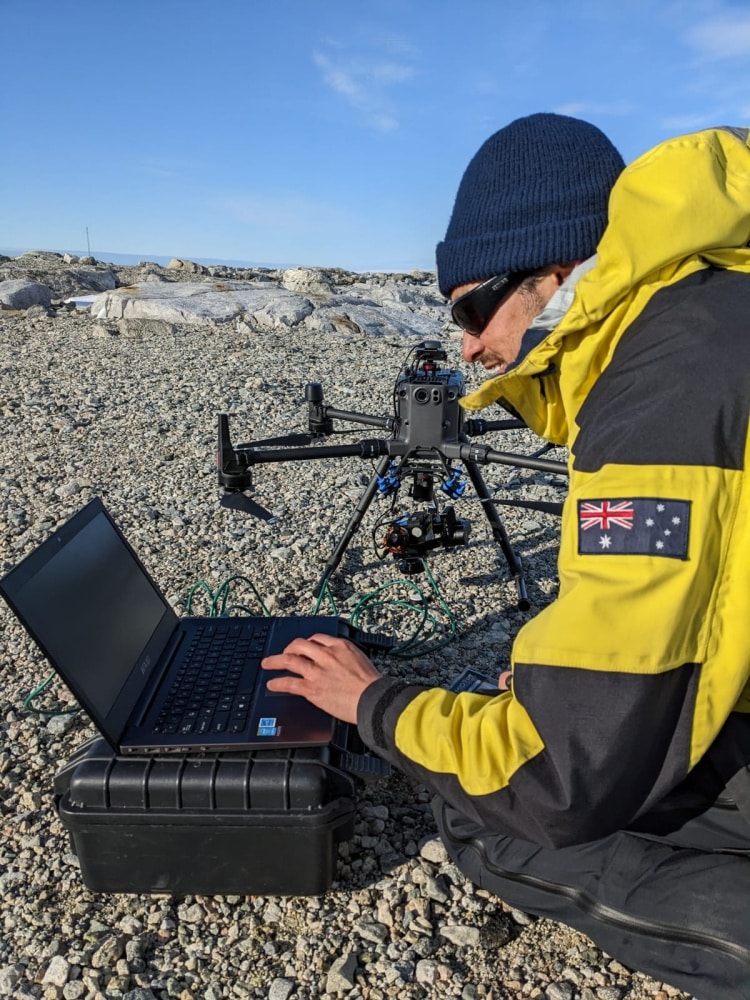
Preparing a drone for its next flight. Source: QUT
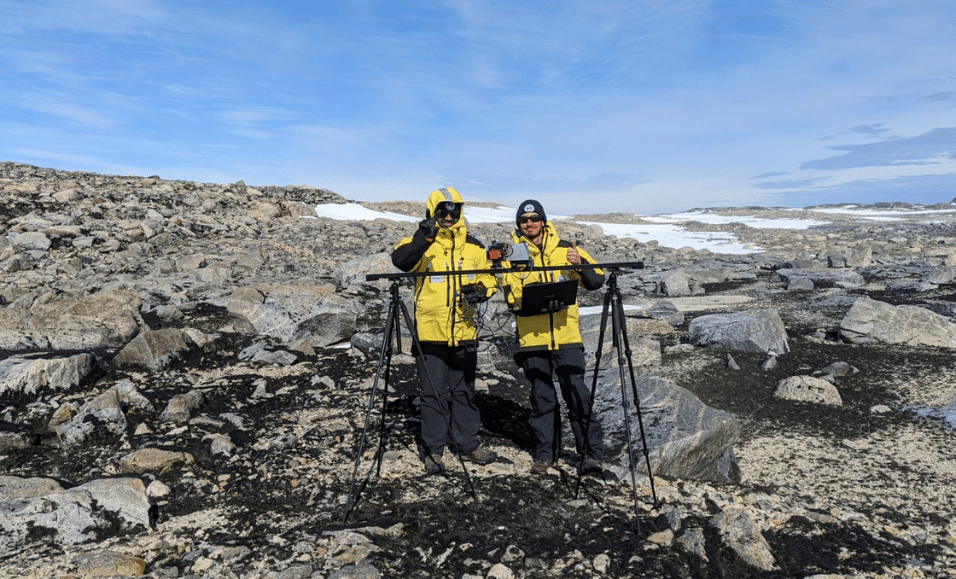
Ashray Doshi and Dr Juan Sandino undertaking a hyperspectral survey. Credit: Barbara Bollard
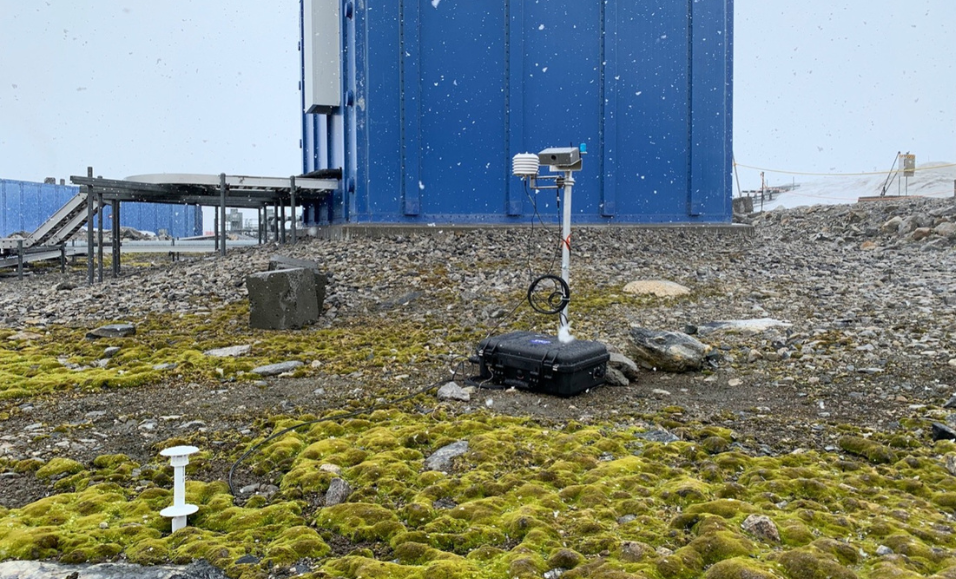
The new smart sensor system set up in the moss beds around Casey Station. Credit: Johan Barthelemy
Visitors to Antarctica expect to encounter a landscape of white ice and blue sky. But in some places a surprising verdant green emerges in the form of Antarctic moss.
These mosses live in a harsh, frozen desert but they’re important because they provide habitat for tiny ecosystems of tardigrades, bacteria and other organisms. They’re also useful to scientists because they can help us track and understand the impact of climate change on the continent. Like tree rings, they preserve a record of past climate in their shoots and like traffic lights, they go green when healthy, red when stressed and black when moribund.
The moss that lives around Australia’s Casey Station has been monitored by scientists for over 20 years. In this time, the health of the moss has declined due to changing climate conditions, ozone depletion and heatwaves, increasing the need for continuous, year round monitoring.
This has always been difficult. Antarctica is remote and often scientists can only travel there for a few weeks a year. There is also no cellular network and most equipment struggles to withstand the freezing conditions.
However, new technologies are offering solutions. A team of SAEF scientists has just returned from two months in Antarctica where they have been using drones, artificial intelligence and machine learning to develop improved methods to monitor the moss.
This team includes Professor Barbara Bollard (Auckland University of Technology), Mr Ashray Doshi (Auckland University of Technology), Dr Johan Barthélemy (University of Wollongong and NVIDIA), Dr Krystal Randall (University of Wollongong) and Dr Juan Sandino (Queensland University of Technology).
Piloting the drones
While in Antarctica, the team used drones to map large areas where moss grows around Casey Station, including two Antarctic Specially Protected Areas (ASPA) and Robinsons Ridge.
Over the course of two months, Barbara, Ashray and Juan conducted 25 flights collecting data over places no one has flown a drone before.
The drones were fitted with RGB, multispectral and hyperspectral sensors, collecting between 5,000 and 10,000 images on each flight. The team also collected geospatial referencing data on the ground.
“We were amazed at how much area we were about to map in between typical blizzard conditions in Antarctica. In addition, there was a great deal of snow melt in the early season so more vegetation was exposed making it easier for us to detect,” Barbara explains.
Now that they are back in Australia, the team will spend the next several months processing and analysing the data to develop maps of the vegetation, hydrology, 3D fly-throughs and VR of the landscape. Juan will also use machine learning to train a model to identify all the vegetation, including moss, lichen and cyanobacteria, within the images. This process will be aided by a new GPU stack at the University of Wollongong which was donated to the program by NVIDIA.
“The next step consists of processing all the individual sets of imagery collected from our cameras into georeferenced maps,” explains Juan.
“Once I obtain such maps, I will begin to label correlated pixels with our ground data observations collected by the moss team and our GNSS measurements. Finally, I will research on the optimal workflow or pipeline to obtain a classification map of areas with moss, lichen, cyanobacteria and their distribution in the ASPA.”
These new maps will have a variety of uses and will support scientists and policymakers to develop management plans that better protect the moss and the ecosystems that it supports.
Sensing the latest trend
While the drones were being flown in the sky, a state-of-the-art monitoring platform was being installed and tested on the ground. In a world-first, it is now providing scientists with continuous images and data about the Antarctic environment where it is installed.
This Artificial Intelligence of Things (AIoT) platform was co-designed by Johan, Krystal and their colleague Doug Henness at the University of Wollongong. As a biologist with expertise in moss, Krystal provided advice on the data scientists need to understand and monitor the moss, while Johan and Doug assembled and programmed it.
The platform includes a webcam which captures photographs and a smart sensor system, which monitors air temperature, moss canopy temperature, light intensity, humidity and soil-air energy exchange.The platform can process the data in-situ and send back only what is relevant to scientists in Australia over a low power, long range network. For example, when the temperature of the moss goes over a certain level during a heatwave the system will automatically send the data back.
“We currently know nothing about the effects of heatwaves on Antarctic mosses, so having this system in place will allow us to gather this important information,” explains Krystal.
The platform also required the installation of the first LoRaWAN gateway in Antarctica to enable the long range communication and the data transmission back to Australia.
“It was exciting to be in the field to deploy both the AIoT platform and the network infrastructure in Antarctica. This season was about testing the components of the platform and validating the complete pipeline from collecting the data in Antarctica to transmitting it back to Australia and visualizing it in real-time,” explains Johan.
“We were thrilled to hear from our colleagues back home that they were able to follow the evolution of the moss in real-time. We definitely had a fantastic season!”

Bryum pseudotriquetrum coping well with being underwater. The bubbles show that photosynthesis is occurring. Credit: Krystal Randall

Mosses with very different canopy temperatures, ranging from 19° C where the moss is green (and able to photosynthesise) to 0° C where the moss is moribund (and almost completely inhibited from photosynthesising). Credit: Krystal Randall
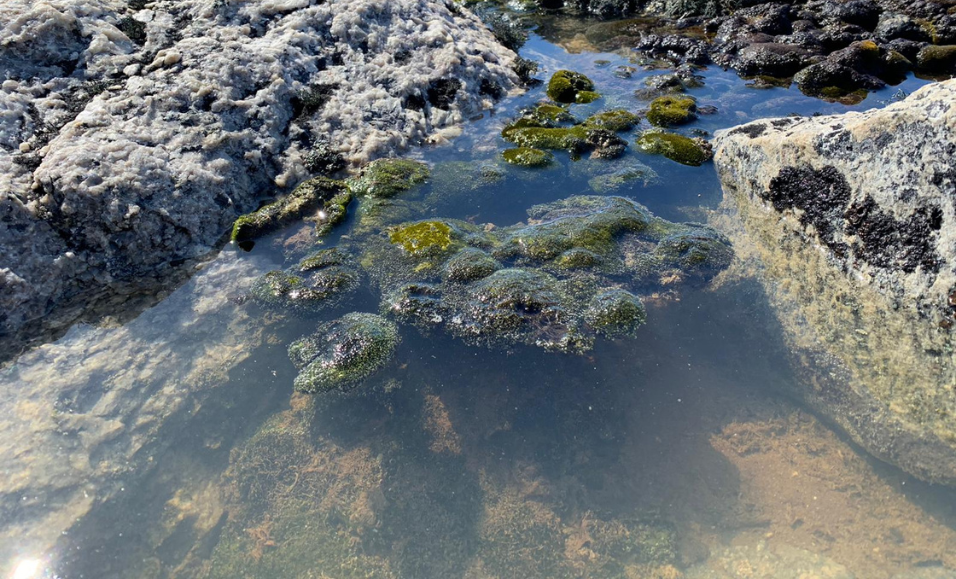
A large piece of moss floating in water after being displaced. Credit: Krystal Randall

These large moss beds are covered in snow over winter and exposed during summer. Credit: Krystal Randall
Moss observations
While these new drone and sensing technologies are providing crucial advances in how we monitor the moss over the long term, moss expert, Krystal Randall offers her initial observations about how the moss is faring at the moment.
“It’s a bit of a mixed bag this season with the moss, some things will need further investigation with climate data and microclimate modelling to understand better,” explains Krystal.
“The biggest thing I’ve seen at all sites is that there’s been so much melt that it’s displaced large pieces of moss in some spots and completely inundated moss in other spots which starves them of CO2 from the atmosphere for photosynthesis.”
“This seems to be affecting the endemic species Schistidium antarctici the most while the cosmopolitan species Bryum pseudotriquetrum seems less affected with clear signs of photosynthesis happening underwater.”
While in Antarctica, the team created a public dashboard which explains more about the team’s work and shows some of the data they collected. Based on their testing over the next year, the team will continue to refine and improve the platform, including installing new AI models for snow detection and image segmentation for healthy, stressed and moribund moss.
About the author
Anna Quinn
Anna is SAEF’s the Senior Communications Adviser.

